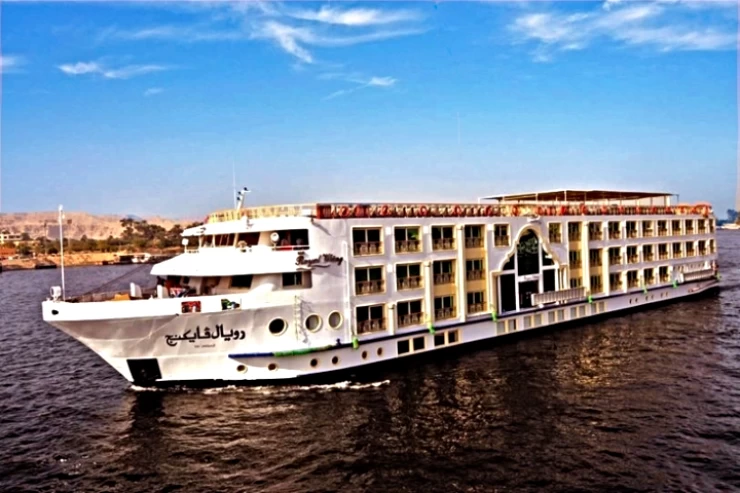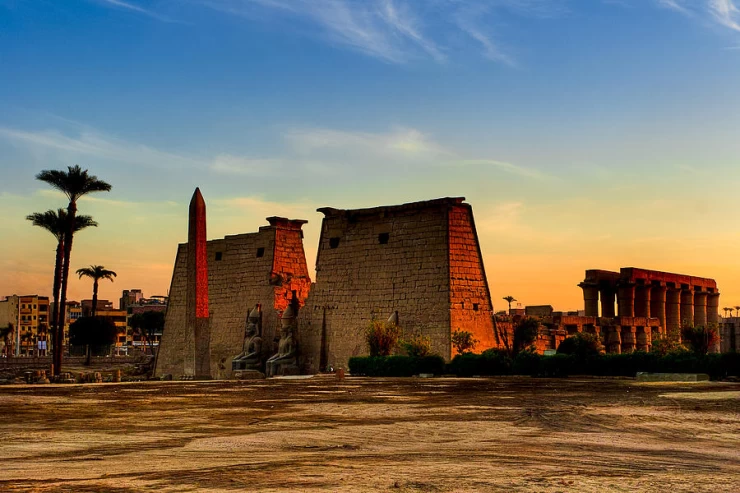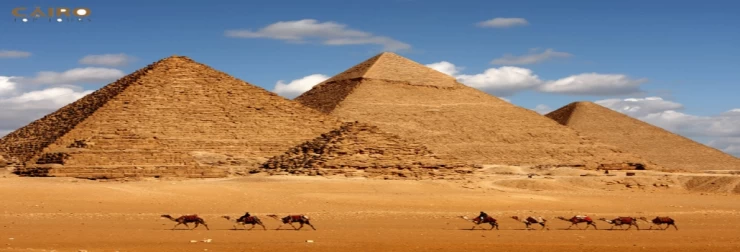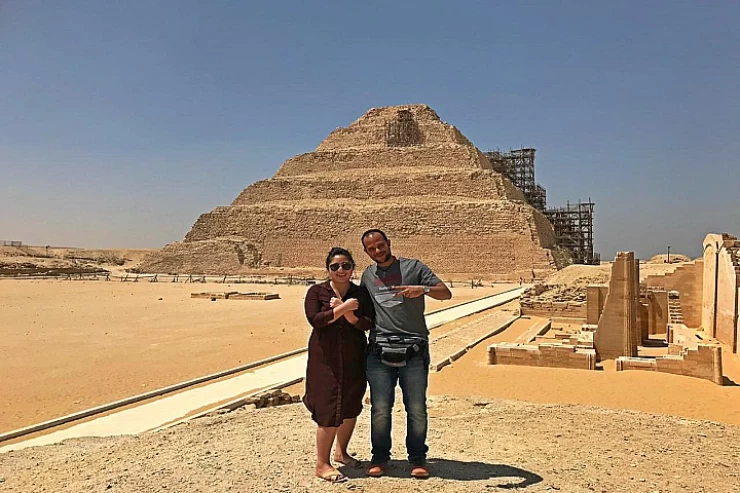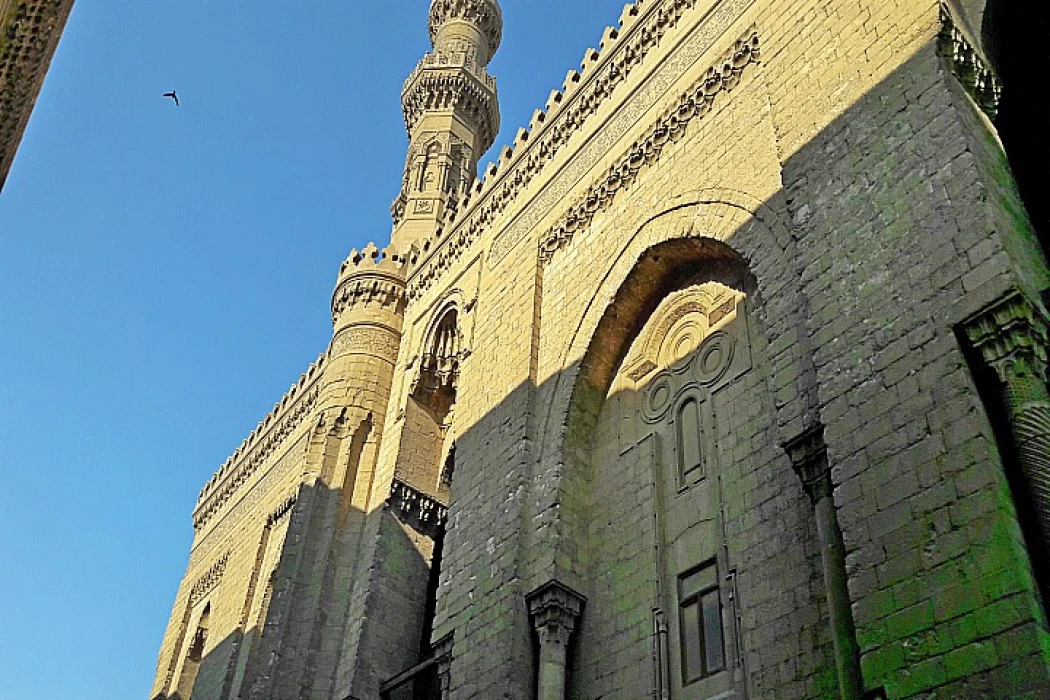
Al Rifai Mosque
Facts About Al Rifai Mosque
Located near the historic Salah al-Din al-Ayyubi citadel in the Khalifa neighborhood to the south of Cairo, the Rifai Mosque is attributed to Imam Ahmed al-Rifai, who was born in Hejaz and moved to Iraq and then to Egypt.
One of Cairo's oldest mosques, the Rifai Mosque, is a notable and ageless architectural symbol because of the numerous elaborate decorations and inscriptions that are displayed on its exterior walls, ceiling, domes, and the large columns that are situated at its outer gate.
The area where this mosque is located was known as Zawiya al-Rifai and it served as the burial place of Sheikh Ali Abi Shabak al-Rifai until the construction of current mosque which was named after his grandfather Sheikh Ahmed al-Rifai. The mosque was constructed within 19th century to compete with Mamluk Sultan Hassan Mosque built in 14th century and each year it celebrates the anniversary of Rifai’s birthday although his remains were deposited into Iraq.
In 1869, Khedive Ismail's mother, Khushiyar Hanim, bought Zawya al-Rifai and the surrounding area for an unknown reason, and the area later became the resting place of the remains of many members of the Muhammad Ali family, the last of whom was King Farouk.
When she died in 1885, construction stopped for 25 years until Khedive Abbas Helmy II ordered construction to resume and it was inaugurated in 1912. The designer of the mosque is the nephew of Muharram Bey, governor of Alexandria and husband of Muhammad Ali's daughter Tafida Hanim, who attended the Sawari School in Egypt, then was sent to France to enroll in the Egyptian Military School and the Higher School of Engineering in 1844
It was inbuilt in 2 totally different periods, that is between 1869 and 1912, thus it's characterized by totally different inventive and subject designs. Next to that stands the far better well-known ruler Sultan Hassan Mosque, chemical analysis back to the ordinal century, that has remained intact despite the troubled centuries of history.

The prodigious size of the house of worship is most hanging. it's counted jointly of the main things to do in Cairo and is located in Midan El Qala’a, right below the Citadel of Salah El -Din in the foremost central part of Islamic Cairo. you'll be able to reach the house of worship of Al Rifa’i through a mutual entrance shared by the 2 mosques this one and therefore the mosque of Sultan Hassan.

Many renowned folks are buried here in Al Rifai house of worship, tons of them belong to soldier family-like Kushyar Hanim ordered its construction in 1869, and her son the renowned Khedive Ismail, United Nations agency refurbished Cairo and most of Egypt likewise as Sudan that wont to be a part of the Egyptian kingdom. The house of worship hosted the deceased body of Muhammad Reza Pahlavi crowned head Pahlavi, known for being the ultimate of Iran before the Moslem Revolution, that caused the Ruholla Khomeini rule.
within the same burial space lies the Shah’s son, Mohamed Reza Pahlavi died in 1980 whereas in exile in Cairo. Another notable figure buried here was Yehya Al Ansari, a guide of the Prophet Mohamed ( peace be upon him) and native saint Ali Abu-Shubbak. though not technically buried within the house of worship Arab chief Ali Al Rifai, the United Nations agency was a number one figure in Islamic Cairo throughout medieval times, including a shrine wherever several locals return till at the present time to hope and receive a number of his blessings.
Before the large reconstruction, Al Rifai house of worship was situated at the positioning of a little house of worship named Rifai Zawiya and was believed to create several of the known scholar followers and students, you'll be able to visit the house of worship throughout any of the regular Cairo Day Tours
Perhaps you may value more highly walking to the house of worship from the castle of salaah El-Din Street, and there's a motivating read of the traditional Egyptian homes awaiting appreciation. you'll be able to conjointly get near to the house of worship via Sayeda Aisha Street, which is able to conjointly lead you to the most gate. it's a double gate shared by each Al-Rifai and ruler Hassan, you may pass it through the protection scanner or detector. the 2 mosques are separated by a comparatively slender pedestrian street, and therefore the huge structure of the Al-Rifai house of worship mustn't be stunning if its size and talent to contend with the neighboring ruler Hassan house of worship, had been of utmost importance.
When you walk shortly towards the entrance of the Al Rifai house of worship, a high step takes you to a large portal. As a sort of respect and to avoid confusion, guests to the house of worship should be able to take away their shoes before they enter, and therefore the girls are kindly requested to wear incommunicative garments and that they will bring on a headband.
The house of worship includes a nice similarity to several of the fashionable structures. Once within, one will solely notice the attractive ceiling. Gold was especially foreign from Turkey for coating. guests ought to be happy to wander around within this subject marvel. we advise you to visit the burial places of Khedive Ismail and Reza crowned head Pahlavi.
Once you're finished viewing of these Islamic patterns, be happy to run your hands across the shrine of Al Rifai marked by inexperienced lights within the space right within the middle of the house of worship. you'll be able to even scan your prayers or create a would like that may be certainly fulfilled! If you're visiting the mosque on a Friday morning it'll be most of the time quiet and empty.







